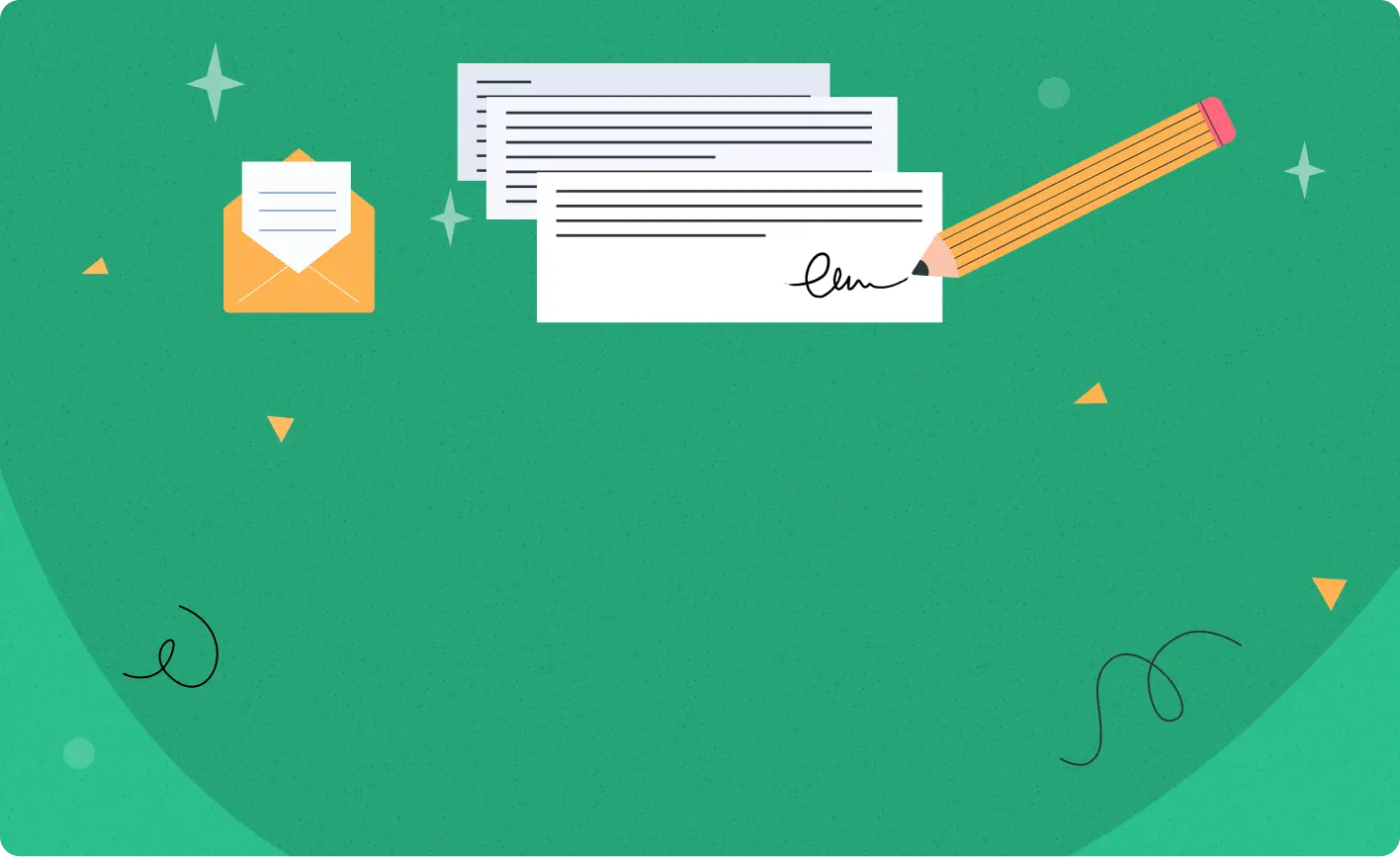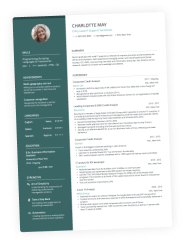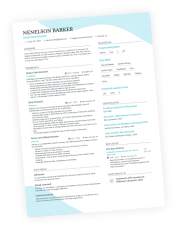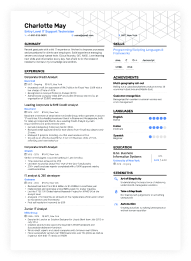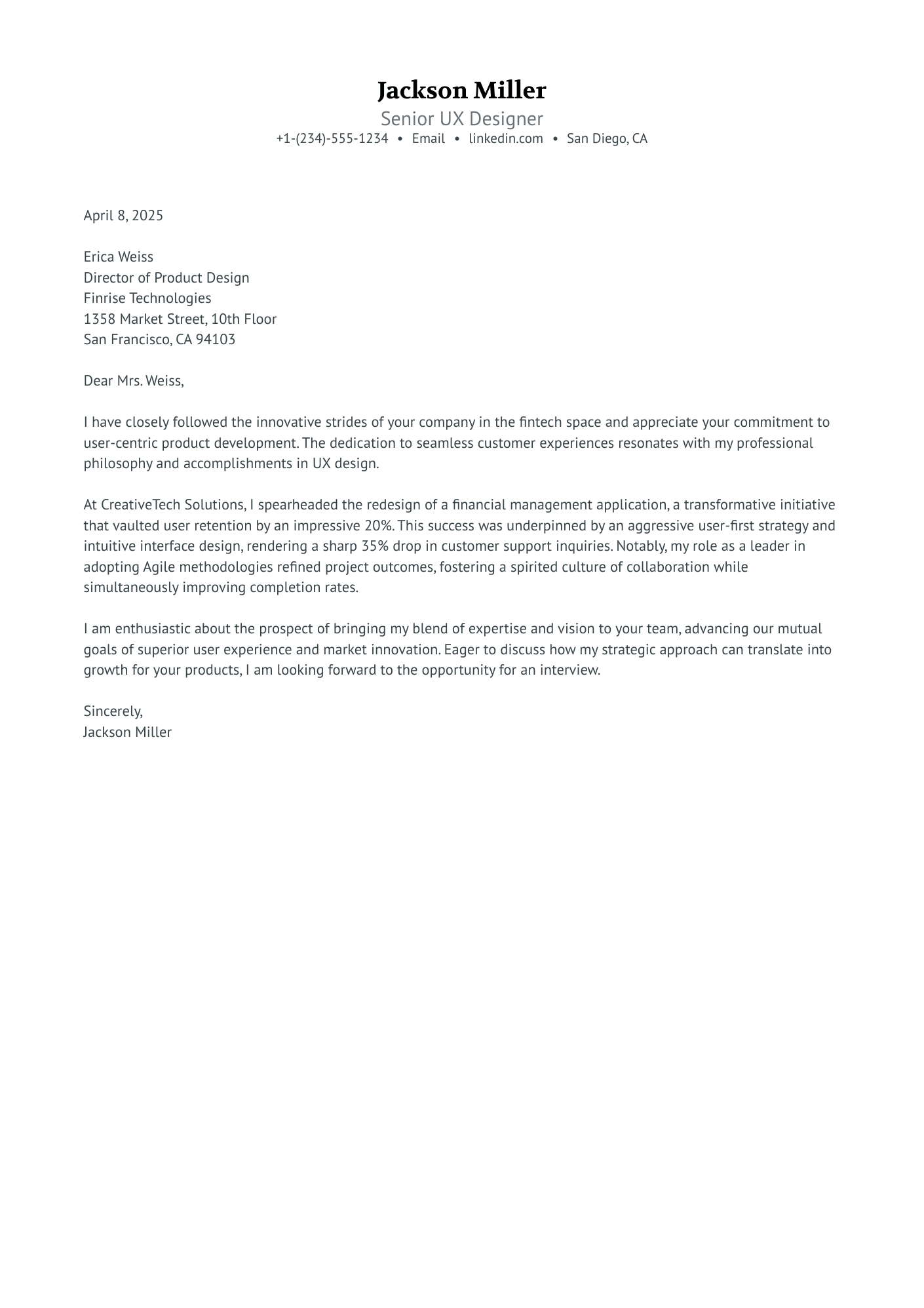You’ve perfected your resume—now, don’t let a poorly formatted cover letter hold you back.
Knowing how to write a cover letter is one thing—but if it’s not formatted properly, even the best content can end up ignored.Think of your cover letter like a first impression in print: clean, clear, and confidently put together.
Even a great cover letter can fall flat if the layout is off, the text is cluttered, or the structure is confusing. Recruiters spend little time scanning your application, and messy formatting can send the wrong message before they even read your first line.
In this guide, we’ll show you the best way to format a cover letter that looks clean, reads smoothly, and gives your application a professional edge—whether you’re applying for a full-time role, internship, or emailing your letter directly.
Key takeaways
- The proper cover letter format includes a header, greeting, intro, body, closing, and sign-off.
- Use a clean, professional layout with clear spacing, consistent fonts, and left-aligned text.
- Tailor your content to the role using keywords, company tone, and relevant accomplishments.
- Choose between a narrative or bulleted format for the body—whichever showcases your strengths best.
- Use a personalized greeting and avoid generic templates to make a stronger impression.
- Adjust formatting if your cover letter is submitted in an email (e-note) rather than a traditional document.
Before we dig in, let’s outline what a cover letter is, exactly.
Drop your resume here or choose a file.
PDF & DOCX only. Max 2MB file size.
What is a cover letter?
A cover letter is a one-page document that goes with your resume to introduce yourself and explain why you're a great fit for the role. While your resume lists your experience, the cover letter adds context—showing your motivation, personality, and how you can contribute to the company.
It’s your chance to make a strong first impression, especially when tailored to the job. In a sea of generic applications, a well-formatted cover letter can be what sets you apart.
Cover letter template
If you want a quick cover letter outline you can use to draft your own document, try this one:
[Your Name]
[Your Contact Info]
[Date]
[Hiring Manager Name]
[Company Info]
Dear [Hiring Manager Name],
[Intro paragraph – hook the reader in, engage with them through a strong achievement, years of experience, or a connection to their work]
[Body paragraph(s) – key skills, value, examples]
[Closing paragraph – CTA, thanks]
Sincerely,
[Your Name]
Like the example below? It was made with our Cover Letter Generator. Just upload your resume and it will do the heavy lifting for you!
What is the proper cover letter format?
Once you understand what a cover letter is and why it matters, the next step is getting the format right. Why? Because no matter how great your content is, poor formatting can make your cover letter hard to read—or worse—look unprofessional.
The best way to format a cover letter is to follow a clean, professional structure that looks expert and meets industry standards. Your cover letter is, first and foremost, a letter. No intricate designs are needed, just consistent formatting that makes your message easier to digest and gives your words the attention they deserve.
Here are some tips on formatting to help you keep everything organized.
Cover letter font
Use a professional font that’s easy to read both on screen and in print. Most importantly, use the same font as your resume to maintain consistency. Rubik, Calibri, and Arial are safe choices that strike the right balance between modern and traditional.
Your font size, again, should be identical to your resume’s. Anywhere between 10 and 12 points maintains readability without looking cramped or oversized.
Spacing
Use single spacing within paragraphs and one blank line between sections. Keep the layout clean, with enough white space to guide the reader’s eye.
You can also leave two blank lines in these places to make your cover letter easier to scan:
- Between the company address and the cover letter salutation.
- Between the cover letter salutation and the cover letter introduction.
- Between the cover letter closing and the cover letter sign-off.
This gives each section room to breathe—important for both hiring managers and readability tools.
Margins
Keep your margins between 0.5 and 1 inch on all sides—again, stick to the margins you used on your resume to maintain a uniform look. This size ensures your content doesn’t feel crowded or misaligned.
Alignment
Always left-align your text. Left alignment is the standard for professional documents and helps guide the reader’s eye naturally. Avoid centering or justifying—both can disrupt flow and make your letter harder to read.
Length
A great cover letter is short and to the point. Aim for no more than one page, typically broken into three to four brief paragraphs or about 250-350 words. Say what you need to say—clearly and confidently—without repeating content from your resume or overexplaining.
File format
Unless the job post says otherwise, save and send your cover letter as a PDF to ensure your formatting stays intact across different devices. However, in some cases—like applying directly via email or for roles that call for a more conversational tone—you might opt for an e-note format instead.
This version is shorter, more casual, and written directly in the body of an email, rather than as an attachment. Whichever format you choose, make sure it fits the tone of the company and the application channel.
File name
Name your file professionally and clearly so it’s instantly identifiable. A format like “FirstName_LastName_CoverLetter.pdf” keeps things simple and avoids confusion on the recruiter’s end. Skip generic file names like “CoverLetterFinalV2.pdf.”
You might’ve heard about applicant tracking systems, or ATS, that are commonly used by employers to manage and filter job applications.
They’re primarily focused on scanning resumes for relevant keywords and qualifications, but could also process cover letters in some cases. So, stick to the basic ATS-friendly practices in mind: use keywords from the job description, and don’t overdo it on graphics or complex layouts.
Now that we’ve covered the basics, let’s see how to format each cover letter section.
How to format the different cover letter sections
The structure of your cover letter includes several key sections: your cover letter header, the salutation, the introduction, the body, the closing, and the sign-off paragraphs.
How to format your cover letter header
The header is the top section of your cover letter. It features your contact information, the date, and the hiring manager or company’s details. It’s a standard element in formal business letters.
It’s easiest if you copy and paste your resume header into your cover letter.
What to include
Stick to the elements you featured on your resume, such as your name, phone number, email address, LinkedIn, and city and state. Below that, include the date, and then the hiring manager’s name, if you know it, their work title, company name, and company address (if known).
PRO TIP
If the name isn’t listed, check the company’s LinkedIn page—search under the People tab for roles like “Hiring Manager” or “Team Lead.” You can also try the company website’s About or Team page.
If you still can’t find their name, don’t worry—it’s more common than you think. And we’ve got you covered.
What to use when you don’t know the hiring manager’s name (for a corporate role)
- Dear [Company Name] Hiring Team,
- Dear [Department Name] at [Company Name] (e.g., Dear Finance Team at Acme Inc.)
- Hello [Company Name] Talent Team,
- Dear [Company Name] Recruiting Panel,
Don’t use an outdated salutation such as “To whom it may concern” or “Dear Sir/Madam.” These feel impersonal and can hurt your chances of genuinely connecting with the reader.
How long should it be?
Your contact info should take about two or three lines. Keep it compact and easy to scan. Avoid turning it into a mini-bio. Your summary goes on your resume only, no need to copy it into your cover letter.
First, list the date on its own line. Then add the company address block, which might take up to five lines: the hiring manager’s name, their title, the company name, and the address.
Additional tips:
- Stack your contact details at the top—left-aligned or centered, but stay consistent with your resume.
- Leave one blank line between your contact info, the date, and the company address.
- No need for excessive styling—stick to the colors and fonts from your resume.
Here’s an example:
How to format your cover letter introduction
Your cover letter introduction is the “opening hook” to your document. It sets the tone for the rest of your letter and is often the part that decides whether the hiring manager keeps reading or moves on.
What to include
You want to start strong—with something that grabs attention right away. This could be your years of experience, a standout achievement, or even a connection to the company. A genuine compliment about the company or a clear reason why you want to work there can also go a long way.
It’s tempting to open with a line like “I’m excited to apply for this role,” but that approach often feels generic. A stronger hook—like a key result or a shared value—works better.
How long should it be?
Don’t make this section too long. Instead, use two to three short, sharp, and attention-grabbing sentences.
Additional tips:
- Keep it as a standalone paragraph.
- Use a single white line to separate it clearly from the body.
- Avoid starting with “My name is…” or “I am writing to apply…”—instead, get to the point with impact.
Here’s an excerpt from a nurse cover letter:
How to format your cover letter body
This is where you connect your experience to the job. It’s the part of the letter that connects your experience and skills to what the company is looking for—bringing your resume to life with context, intent, and personality.
There’s no single way to format this section, but most cover letters use one of two approaches. If you want to tell a quick story that shows how you solved a problem or led a project, go with a narrative format. For more technical or results-driven roles, a bulleted format makes your achievements easy to scan.
Whichever you choose, focus on showing how your experience aligns with the role. Highlight one or two key accomplishments—ideally with numbers—and connect your skills to what the company is looking for.
What to include if you choose the narrative approach:
The narrative approach works best when you want to tell a story that adds context, personality, or emotional weight to your experience—something a bullet list just can’t capture as well.
If you're using storytelling in your cover letter, include:
- A short, focused story that underscores how you solved a problem, led a project, or made an impact.
- The outcome or result (metrics help, if you have them).
- A connection to the company’s values, mission, or tools.
- Keywords that match the job description, woven in naturally.
Who should use the narrative format?
- People-focused or creative roles: If you work in education, healthcare, HR, marketing, design, or nonprofits, narrative helps highlight soft skills, empathy, and communication—core strengths in these fields.
- Career changers or recent grads: It gives you space to connect your background or passion to the role, even if your experience isn’t a perfect match on paper.
- You’ve got one great story: If there’s a standout project or achievement worth unpacking, narrative lets you show the how and why—not just the result.
- Mission-driven companies: When values and purpose matter, narrative shows who you are—not just what you’ve done.
Let’s check out an example body from a customer service cover letter:
What to include if you choose the bulleted approach:
The bulleted format is a great choice if you want to highlight several different achievements, not just one. It’s especially helpful in fast-paced or results-driven fields, where hiring managers are short on time. This format is clean, easy to skim, and lets you show a range of skills and results at a glance.
If you’re using bullet points in your cover letter, include:
- A short intro sentence that sets up the bullets (e.g., “Here are a few ways I’ve made an impact in similar roles…”).
- Three or four bullet points emphasizing key achievements, skills, or tools you’ve used.
- Specific results or outcomes—use numbers where possible to show impact.
- Action verbs to lead each bullet and keep the tone confident and direct.
- Keywords from the job description that align with the role and industry.
Who should use the bulleted format?
- Technical or results-oriented roles: Perfect for fields like engineering, sales, IT, finance, or operations where hard skills and metrics matter most.
- Candidates with multiple relevant achievements: If you have several accomplishments to highlight, bullets help keep them organized and digestible.
- Experienced professionals: When you’ve been in the field for a while, this format lets you showcase depth without overwhelming the reader.
- High-volume or competitive applications: In roles where hiring managers review dozens of applications quickly, bullets make your impact immediately visible.
Now let’s check out an example cover letter body for the same customer position as above, only this time, in a bulleted format.
- •Maintained a 97% customer satisfaction score across 1,000+ support interactions at BrightConnect.
- •Reduced average response time by 30% by optimizing our internal ticket triage system.
- •Trained and onboarded 3 new team members, improving ramp-up time by 20%.
- •Regularly recognized for empathy and problem-solving on customer feedback surveys.
How to format your cover letter closing
The closing paragraph wraps up your cover letter and leaves the final impression. It’s your chance to bring everything together—your enthusiasm, fit for the role, and professionalism—and to gently encourage the hiring manager to take the next step.
A strong closing doesn’t just say “thanks,” it shows confidence and signals you’re ready for the next conversation.
What to include
Briefly restate your interest in the role in a natural, confident tone—just enough to remind the reader why you're a great fit, without repeating your introduction.
Be sure to thank them for their time and consideration—this small detail shows professionalism and courtesy.
Finally, include a polite call to action that expresses your enthusiasm about moving forward, whether it's a willingness to discuss the role further or a simple note that you're looking forward to hearing from them.
How long should it be?
Your closing should be no more than two to three sentences. Keep it clear, focused, and positive. There’s no need to re-explain your experience—just leave the reader with a sense of confidence and interest.
Additional tips:
- Keep it as a standalone paragraph: Visually, this helps it stand out from the body of the letter and gives the reader a clean “wrap-up” moment.
- Be confident, but not pushy: Show you’re eager about the role, but avoid sounding aggressive or entitled to a reply.
- Avoid overly formal phrases unless the industry calls for it: Phrases like “Please feel free to contact me at your earliest convenience” can sound outdated in most modern industries. Use more natural alternatives like “I’d love the chance to speak further”—unless you’re applying in a formal setting like law or government, where traditional language may be expected.
Let’s see an example of a closing for an engineering cover letter:
How to format your cover letter sign-off
The sign-off is the final touch of your cover letter. It’s where you wrap things up professionally and leave a polite, confident last impression.
What to include
Your sign-off should contain a formal closing phrase—like “Sincerely,” “Best regards,” or “Kind regards”—followed by your full name on the next line.
If applicable, this is also the right place to briefly mention you’ve attached your resume or portfolio (e.g., “Enclosure: resume”).
If you're submitting your cover letter as an email, it’s also a good idea to include your contact details directly under your name, especially if they aren’t already in your email signature.
Different sign-offs and when to use them
| Sign-off | What’s the tone and when to use |
|---|---|
| Best regards | Tone: Professional, neutral
|
| Kind regards | Tone: Professional, slightly warm Use when:
|
| Sincerely | Tone: Formal, traditional Use when:
|
| With appreciation | Tone: Grateful, polite Use when:
|
| Respectfully | Tone: Very formal Use when:
|
Here are some sign-off options for you to consider:
How long should it be?
Keep it brief—this section should take up no more than two to four lines total. One line for your sign-off phrase, one for your name, and optionally another one or two lines for contact info if relevant. This spacing gives your letter a clean, professional finish without adding unnecessary clutter.
Additional tips
- Leave one blank line between the closing phrase and your name.
- Use a professional tone—even if the company feels casual, keep the sign-off polished.
- Skip handwritten or digital signatures unless you're submitting a physical document.
What if your cover letter is in an email?
There’s one more situation we need to cover to get you fully prepared: what if the job listing asks you to include your cover letter directly in the body of an email?
Don’t worry—this format, also known as an e-note, isn’t as different from a traditional cover letter as you might think. The content stays mostly the same, but a few formatting changes make all the difference.
Here’s what you need to keep in mind.
Format your email subject line clearly
Your subject line acts like your cover letter header. Keep it straightforward: include the job title and your name.
For example:
Subject: Application for Customer Support Specialist – Jordan Lee
This helps the hiring manager immediately understand the purpose of your message.
Skip the header entirely
In an email cover letter, you don’t need a traditional header with your name, contact info, and the company’s address. That information will go at the bottom of your email, under your sign-off.
Additionally, check the table below for a quick recap of the differences between a traditional cover letter and one in the body of your email:
Cover letter vs. e-note
| COVER LETTERS | E-NOTES |
|---|---|
| The classic way to go | Easier to read on mobile devices |
| Follow standard business letter format | Follow a standard email format |
| More formal and longer | Less formal than a cover letter and up to 350-400 words |
| Enclosed as a separate printed document/attachment | Written directly in the email body |
Cover letter format example
Now, let’s put all our knowledge to good use and create a cover letter example to see how all of the formatting tips work together to create a stand-out piece.
Cover letter format example
Jordan Lee
jordan.lee@email.com · (123) 456-7XXX · San Diego, CA · LinkedIn
April 8, 2026
Alexandra Rivera
Customer Experience Manager
Zendesk Inc.
989 Market Street
San Francisco, CA 94103
Dear Ms. Rivera,
With four years of experience delivering customer support in fast-paced SaaS environments, I’m excited about the opportunity to bring my empathy-driven approach and process-focused mindset to the team at Zendesk. Your commitment to user-first design and thoughtful support solutions is something I’ve followed for a while, and I’d love to contribute to that mission.
In my previous role at BrightConnect, I managed over 50 support interactions per day while maintaining a 97% satisfaction rating. I also led an initiative to streamline our internal triage process, reducing response times by 30% and improving overall ticket resolution efficiency. Whether I’m guiding users through complex technical issues or supporting new team members, I bring calm, clarity, and a deep commitment to service.
Thank you for taking the time to consider my application. I’d love the chance to speak further about how I can contribute to Zendesk’s continued growth and customer success.
Best regards,
Jordan Lee
You can try building your own today—with our Cover Letter Builder.
Personalization in cover letters
What sets a strong cover letter apart is personalization. If your letter feels like it could be sent to any company, it’s probably not doing its job. Hiring managers want to know why you’re interested in them—not just any role.
- Start by scanning the job description for keywords and phrases—just like you’d do for your resume. If they mention “collaboration,” “problem-solving,” or “customer-first mindset,” naturally reflect that language in your letter. It shows you're aligned with what they’re looking for.
- Next, match the company’s tone. A creative agency might appreciate a casual, energetic voice, while a financial firm may expect something more formal. Adapting your tone makes your letter feel like it fits.
- Finally, don’t rely on generic templates. Mention the company by name, reference the specific role, and include a detail that proves you’ve done your research. A little tailoring goes a long way.
How to format a cover letter with no experience
But what if you’ve got no work experience yet? This could make your cover letter even more meaningful. Think of it as a space to present your story and motivation, outside of the traditional career achievements. A good cover letter is a place to focus on your transferable skills, enthusiasm, and potential.
Here’s how to format it:
- Intro: Start with a personal reason you're excited about the company or role. Share a relevant academic, volunteer, or extracurricular achievement to catch attention.
- Body: Highlight skills you’ve developed through school, internships, part-time jobs, or personal projects. Focus on qualities the job description asks for—like problem-solving, communication, or teamwork.
- Closing: Reinforce your motivation and express confidence in your ability to learn and grow. A polite thank you and a willingness to discuss the role go a long way.
PRO TIP
Even if you’ve never worked in the field, show that you’ve done your homework on the company and are eager to contribute.
Cover letter format example
Maya Alvarez
maya.alvarez@email.com · (987) 654-3210 · Orlando, FL · LinkedIn
April 17, 2026
Mr. Gordon Cole
Hiring Manager
Sunshine Community Center
Orlando, FL
Dear Mr. Cole,
Supporting others has always come naturally to me—whether it’s helping classmates stay organized or volunteering with my local library’s reading group. When I came across the part-time Administrative Assistant role at Sunshine, I saw a chance to bring those same strengths to a team that’s making a real impact in our community.
While I haven’t held a formal job yet, I’ve spent the past year as the student secretary for our school’s environmental club. In that role, I managed weekly meeting notes, organized campus clean-up events, and coordinated schedules between students and faculty—skills I know would transfer well to your admin role. I also volunteer on weekends with my local library, assisting younger kids with reading activities, which has strengthened my communication and multitasking abilities.
I admire Sunshine’s commitment to accessibility and inclusion, and I’d be proud to contribute to that mission. Thank you for considering my application. I’d love the chance to speak more about how I can help the team run smoothly and make a difference.
Kind regards,
Maya Alvarez
FAQs on cover letter formats
Let’s review a few more common questions regarding cover letters.
Should I write a cover letter if it's not required?
Unless the job posting explicitly says “no cover letter,” including one is a smart move.
When the competition is high, or the role emphasizes communication, culture fit, or leadership, a strong cover letter can absolutely give you an edge. At worst, it gets skimmed. At best, it’s what gets you the interview.
How to write a European cover letter?
A European cover letter generally follows the same structure as a U.S. one—header, greeting, intro, body, closing—but may be slightly more formal depending on the country.
In some EU regions (like Germany or the Netherlands), it’s common to include your full address and the employer’s, and the tone tends to lean professional and reserved.
Keep it concise (about half a page to one page), and tailor it to the specific role and company.
What is more important, a resume or a cover letter?
Think of them as a team: your resume, or CV, as Europeans call it, outlines what you’ve done, and your cover letter explains why it matters and why you’re a match. In most cases, recruiters will look at your CV first—but the cover letter can often tip the scale, especially when your experience needs context or your motivation makes a difference.
If the role values soft skills, storytelling, or alignment with a mission, your cover letter might be the more persuasive piece.
Conclusion
Formatting makes your cover letter clear, professional, and easy to read. It shows attention to detail—and can make the difference between getting skipped or getting the interview. A polished, properly structured cover letter helps you stand out in a competitive job market and proves you’re detail-oriented from the start.
So, whether you're applying for your first internship or a senior-level role, get the format right—and give your application the best possible shot.
